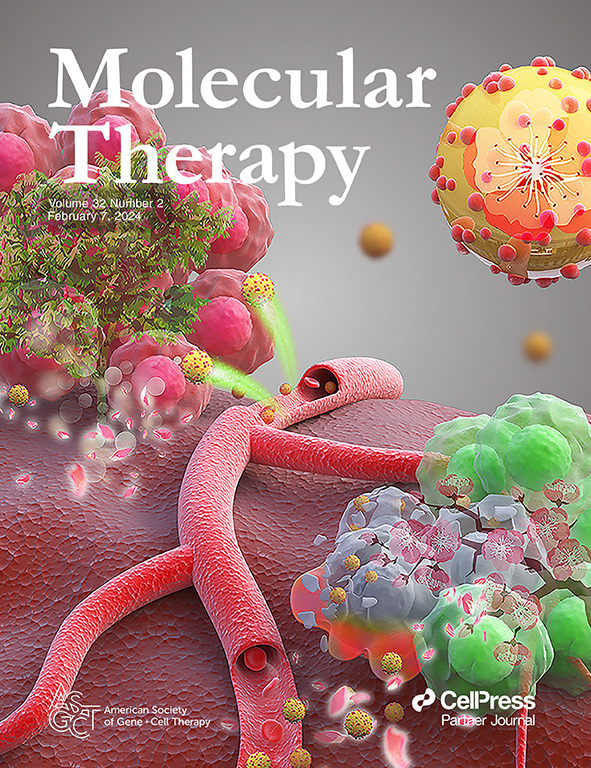Discovery of a new selective Endoplasmic Reticulum Aminopeptidase 1 inhibitor for Hedgehog-dependent cancers treatment.
IF 12
1区 医学
Q1 BIOTECHNOLOGY & APPLIED MICROBIOLOGY
引用次数: 0
Abstract
Inappropriate activation of the Hedgehog (HH) signaling pathway drives the pathogenesis of several cancers, including medulloblastoma (MB), the most common malignant brain tumor in children. HH-group MB (HH-MB) is highly heterogeneous and resistant to current treatments. Understanding the molecular events underlying the control of the HH pathway is critical for the development of more effective and tailored interventions. ERAP1, a key regulator of the immune response, has emerged as a promising therapeutic target for HH-MB, but the lack of clinically viable ERAP1 inhibitors has hindered progress in this area. Here, we identify canthin-6-one (N1) as a selective ERAP1 inhibitor. N1 binds directly to ERAP1 and disrupts its function in the HH pathway, resulting in reduced signaling. Specifically, N1 impairs the association of ERAP1 with the deubiquitinase USP47, promoting βTrCP protein stability and Gli1 degradation. Notably, HH-dependent cells genetically depleted for ERAP1 are insensitive to N1, confirming its specificity. Remarkably, N1 inhibits HH-MB growth in vitro and in vivo, crosses the blood-brain barrier, and improves survival in a HH-MB mouse model. These findings highlight N1 as a breakthrough ERAP1 inhibitor and provide a promising therapeutic option for the treatment of HH-dependent cancers.一种新的选择性内质网氨基肽酶1抑制剂用于刺猬依赖性癌症治疗的发现。
Hedgehog (HH)信号通路的不当激活驱动了几种癌症的发病机制,包括髓母细胞瘤(MB),这是儿童中最常见的恶性脑肿瘤。HH-group MB (HH-MB)是高度异质性的,对目前的治疗具有耐药性。了解HH通路控制背后的分子事件对于开发更有效和更有针对性的干预措施至关重要。ERAP1是免疫反应的关键调节因子,已成为HH-MB的有希望的治疗靶点,但缺乏临床可行的ERAP1抑制剂阻碍了该领域的进展。在这里,我们确定canthin-6-one (N1)是一种选择性ERAP1抑制剂。N1直接与ERAP1结合并破坏其在HH通路中的功能,导致信号传导减少。具体来说,N1破坏ERAP1与去泛素酶USP47的关联,促进βTrCP蛋白的稳定性和Gli1的降解。值得注意的是,基因上缺失ERAP1的hh依赖性细胞对N1不敏感,证实了它的特异性。值得注意的是,N1在体外和体内抑制HH-MB的生长,穿过血脑屏障,提高HH-MB小鼠模型的存活率。这些发现突出了N1作为一种突破性的ERAP1抑制剂,并为hh依赖性癌症的治疗提供了一种有希望的治疗选择。
本文章由计算机程序翻译,如有差异,请以英文原文为准。
求助全文
约1分钟内获得全文
求助全文
来源期刊

Molecular Therapy
医学-生物工程与应用微生物
CiteScore
19.20
自引率
3.20%
发文量
357
审稿时长
3 months
期刊介绍:
Molecular Therapy is the leading journal for research in gene transfer, vector development, stem cell manipulation, and therapeutic interventions. It covers a broad spectrum of topics including genetic and acquired disease correction, vaccine development, pre-clinical validation, safety/efficacy studies, and clinical trials. With a focus on advancing genetics, medicine, and biotechnology, Molecular Therapy publishes peer-reviewed research, reviews, and commentaries to showcase the latest advancements in the field. With an impressive impact factor of 12.4 in 2022, it continues to attract top-tier contributions.
 求助内容:
求助内容: 应助结果提醒方式:
应助结果提醒方式:


